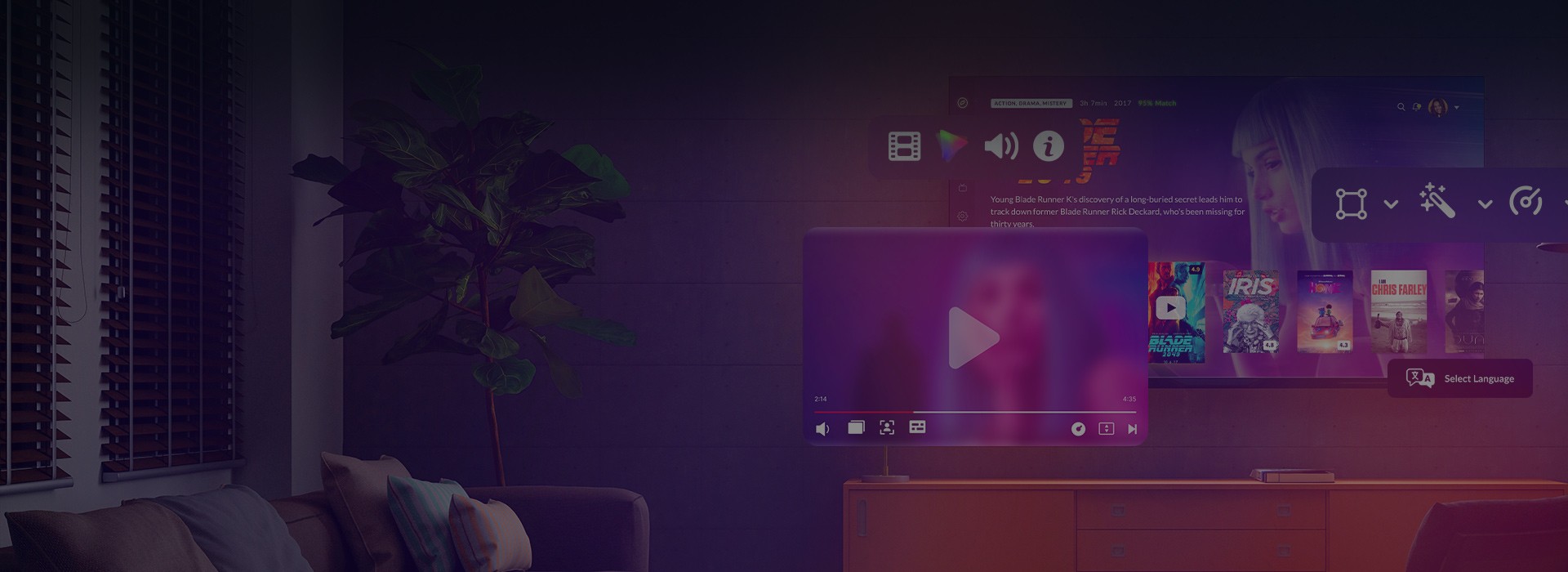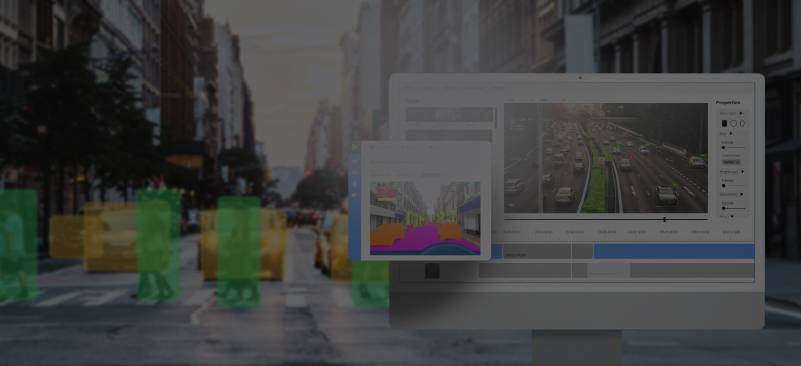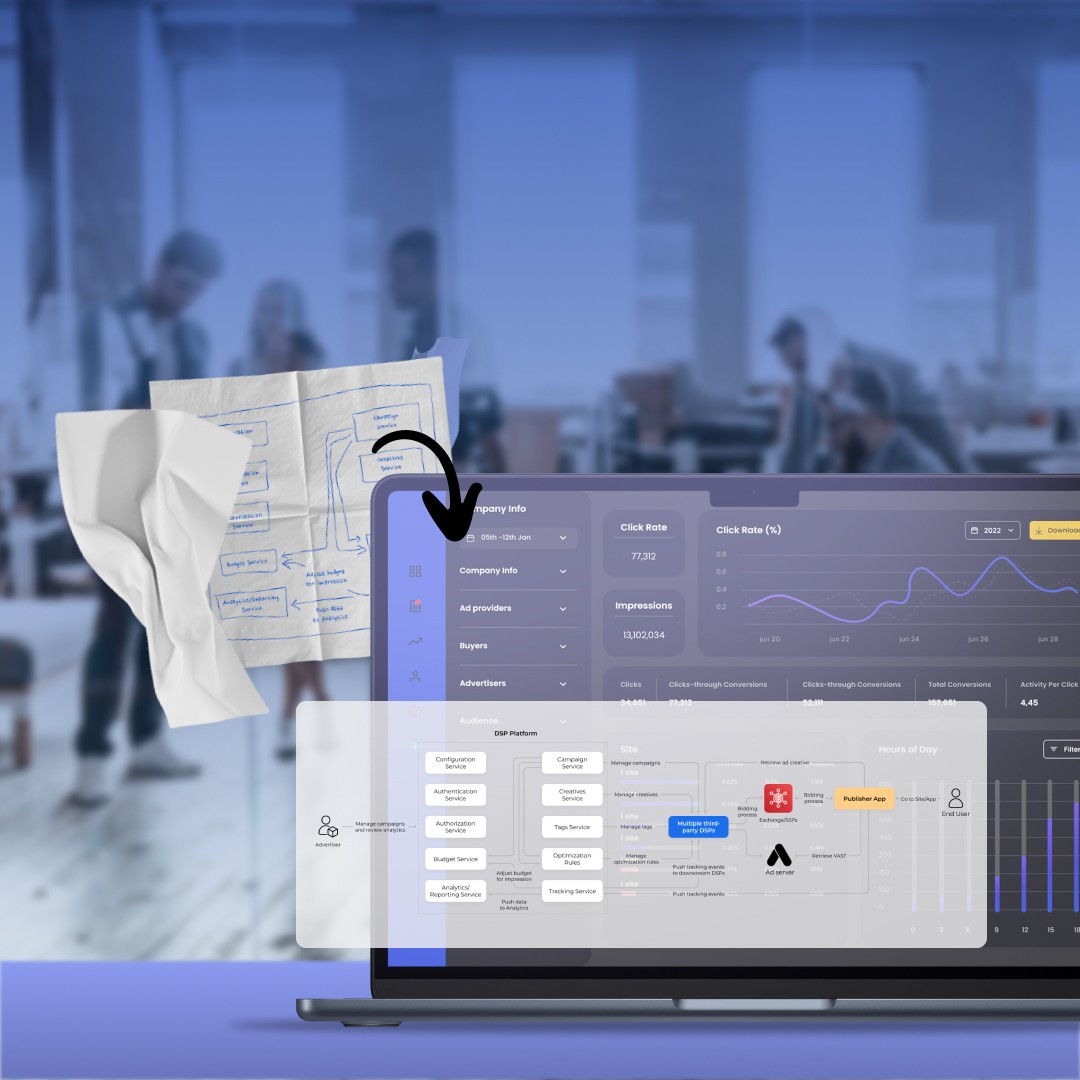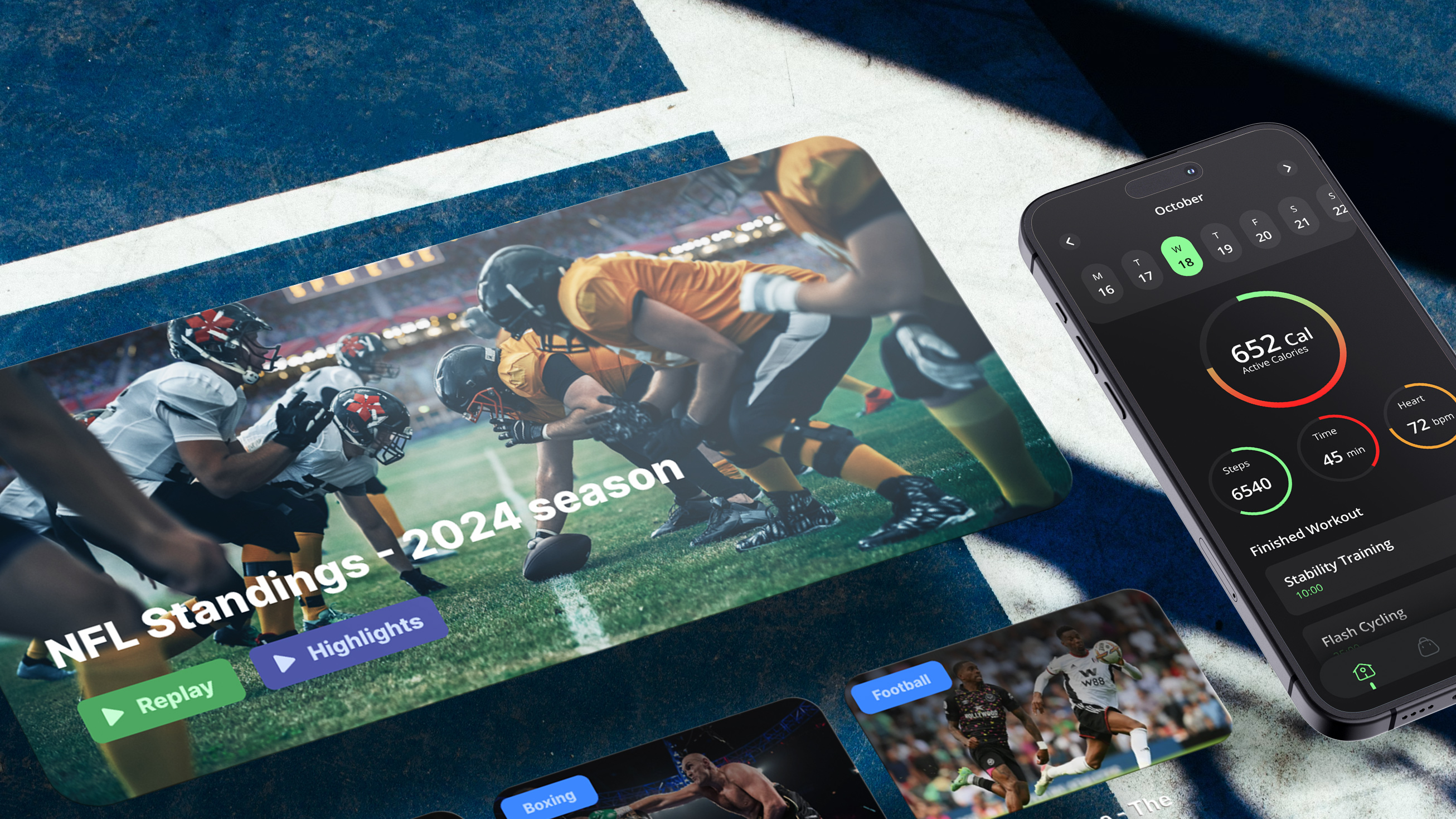AVOD, SVOD, TVOD… no, it’s not code — it’s just the streaming industry doing what it does best: dropping acronyms. If you’re distributing or aggregating media content, understanding AVOD vs SVOD vs TVOD isn’t optional. It’s the difference between scaling your audience or missing the mark.
Here’s the twist: even as streaming continues to boom, with global OTT viewership expected to hit 863 million by 2028, viewers are increasingly hesitant to add another subscription. They’re watching more but spending less, which puts pressure on platforms to find smarter, more flexible ways to monetize.
The goal? Maximize revenue without driving users away. Whether it’s through ads, subscriptions, or one-off purchases, your monetization model has to match your content, audience, and long-term strategy. And don’t underestimate the user experience — features like personalized recommendations and Electronic Program Guides (EPGs) are becoming must-haves, not nice-to-haves.
So let’s break it all down. We’ll cover what these VOD models really mean, explore their strengths and trade-offs, and help you decide which one makes the most sense for your business.
What are VOD monetization models?
VOD, or Video on Demand, means viewers get to choose what they watch and when they watch it — no schedules, no programming grids, just click-and-play. And with the rise of OTT (over-the-top) platforms, there’s also more choice in how that content makes money.
Enter the three big monetization models:
- AVOD — Free to watch, but supported by ads.
- SVOD — Subscription-based, where users pay monthly or yearly for unlimited access.
- TVOD — Pay-per-view or rental; users pay per movie, show, or live event.
Each model taps into different viewer habits and revenue strategies. Some focus on reach, others on retention or high-value exclusives. And in many cases, platforms don’t just pick one, they blend models to balance revenue, flexibility, and user experience.
Let’s consider them, what they are, when they work, and why they matter.
AVOD, SVOD, and TVOD explained
AVOD (Advertising-Based Video on Demand): free to watch, not free to monetize

Think of AVOD as the digital evolution of old-school TV: you watch for free, but ads come along for the ride. Viewers don’t pay with cash — they pay with time. Pre-rolls, mid-rolls, banners, sponsor spots… all those ads are what keep the lights on.
It’s no surprise AVOD is having a moment. Platforms like Pluto TV, Tubi, and YouTube’s free content have shown that audiences love free streaming, especially when budgets are tight. If you’re trying to get people through the door, AVOD is one of the lowest-friction models out there.
For content distributors, it’s a great way to cast a wide net. There’s no subscription barrier, so more people are likely to press play. That makes it perfect for newer platforms, niche genres looking for exposure, or anyone aiming to build up a user base before offering premium tiers.
That said, AVOD isn’t always a guaranteed win. Ad revenue isn’t as steady as subscriptions — it can fluctuate based on impressions, click-through rates, or advertiser demand. You’ll also need serious traffic to make it work. A niche library or slow-growing audience may not generate enough views to turn a real profit.
And then there’s the viewer experience. Too many ads? People bounce. Not enough? You miss revenue. It’s a balancing act, and the sweet spot depends on your content, your users, and how often you’re updating your catalog.
Bottom line: AVOD is great if your goal is “reach first, revenue second”. It shines when you’ve got content that’s easy to consume, appeals to the masses, and works well with ads baked in. Just don’t expect it to get money without scale or without a little finesse.
SVOD (Subscription-Based Video on Demand): where content meets commitment

If AVOD is your old-school TV experience, then SVOD is the VIP lounge — no ads, no interruptions, just pure, on-demand viewing bliss. Think Netflix, Disney+, HBO Max, Prime Video — you pay a monthly (or annual) fee, and in return, you get unlimited access to everything in the library.
For users, the appeal is clear: ad-free, all-you-can-watch entertainment. No pop-ups, no pauses for commercials — just hit play and settle in. That simplicity (and consistency) is why SVOD quickly became the dominant streaming model in the 2010s, and why it’s still thriving.
From the business side, SVOD shines for one big reason: predictable income. When subscribers pay regularly, you can forecast revenue, plan production schedules, and scale with confidence. As long as people stick around, your cash flow stays steady. That’s why SVOD is often the model of choice for larger platforms looking for long-term growth.
But here’s the catch: getting subscribers is one thing, keeping them is another. With so many streaming services out there, people are becoming pickier about where their money goes. If your content library isn’t compelling or refreshed frequently, users may churn out fast. And with “subscription fatigue” setting in, even the best platforms are feeling pressure to innovate, which is why more and more are adding cheaper, ad-supported tiers to keep budget-conscious viewers in the loop.
That’s the SVOD tradeoff: it works beautifully if your content is consistently strong. But it also demands ongoing investment in production, licensing, UX, and retention strategies.
So, is SVOD right for you? If your catalog has enough pull to make people reach for their wallets — and you can keep the hits coming — then absolutely. It’s all about building loyalty, month after month.
TVOD (Transactional Video on Demand): pay when it matters

TVOD is the streaming version of renting a DVD &Mdash; simple, one-time access without the strings. You either buy or rent a single title, watch it, and that’s it. No monthly fees, no ads, just a straight-up transaction.
If you’ve ever rented a movie on Apple TV, Google Play, or Amazon, or paid to stream a live fight night, you’ve used TVOD. It’s perfect for that one-off experience: a brand-new movie, a special premiere, a concert stream — something you really want, right now.
For users, TVOD is commitment-free. You don’t have to sign up or keep track of another subscription. You just pay for what you actually watch. And for content owners, that means instant revenue with every purchase, especially if your content is exclusive, event-based, or just released.
Even better? You can often charge more. A hot new release might go for $15–$20, which is more than a typical monthly sub and still cheaper than going to the movies. That kind of pricing works great when you’ve got limited, high-demand content or a passionate niche audience.
But TVOD has its limits. It’s tough to scale as your main model. Most users won’t pay per video every week, and your revenue can swing wildly from one month to the next. Unless you’re constantly releasing in-demand content, your income may feel like a rollercoaster.
TVOD also lacks stickiness — viewers come, watch, and leave. No ongoing relationship. That’s why many platforms use it alongside AVOD or SVOD. Think: a subscription model for everyday viewing, and TVOD layered on top for big new releases or live events.
So when does TVOD shine? When your content has instant value, can stand on its own, and isn’t something users expect to binge in bulk. It’s less about quantity, more about must-see moments and getting paid upfront for them.
Your platform, your rules — let’s make it work
Whether you’re monetizing a niche library or launching the next big OTT service, you need more than just a good idea — you need a solid foundation to deliver, scale, and evolve. Explore how our OTT app development services can help you launch faster, adapt smarter, and monetize better.
Pros and cons: AVOD vs SVOD vs TVOD
Now that we’ve covered the basics of each model, let’s put them side by side. Each approach has its benefits and drawbacks, and those become clearer when you compare them directly. Below is a quick comparison of AVOD vs SVOD vs TVOD in terms of pros and cons:
| Model | Pros | Cons | AVOD
(Ad-supported) | - Largest potential audience (free access)
- Multiple ad revenue streams
- Great for user acquisition
| - Revenue depends on ad performance
- Needs high traffic to scale
- Risk of ad fatigue
|
SVOD
(Subscription) | - Predictable monthly income
- Ad-free experience
- Higher lifetime customer value
| - High content costs
- Competition and subscription fatigue
- Churn risk if value drops
|
TVOD
(Transactional) | - Instant revenue per purchase
- Works well for exclusives/live events
- No subscription commitment
| - Hard to scale
- Irregular income
- Weak customer retention
|
Choosing the right monetization model
AVOD vs SVOD vs TVOD — which model fits your strategy? It depends on your content, audience, and business goals. Here’s a quick framework to help you decide:
1. Content type and audience expectations
Have premium or exclusive content? Go SVOD — people will pay for quality and consistency. Targeting casual, price-sensitive viewers? AVOD removes barriers and brings in volume. Releasing special events or limited-time content? TVOD lets you charge a premium for one-offs.
2. Your current phase and revenue needs
Need to build an audience fast? AVOD helps you scale. Looking for predictable cash flow? SVOD delivers steady income. Launching a big project you need to monetize upfront? TVOD gives you instant return per purchase.
3. Ad tolerance vs. paywalls
Put yourself in your viewer’s shoes: will ads disrupt the experience, or are they okay with a few interruptions?
Content type matters. Educational or kids’ content often works better without ads (parents usually prefer uninterrupted viewing). Meanwhile, general entertainment or casual viewing is usually fine with a few commercials, especially if it means free access.
But geography matters too. Viewer expectations around ads and subscriptions vary by region, and knowing the difference can help you fine-tune your model:
- North America is still largely subscription-first, with SVOD accounting for more than half of all streaming time. But AVOD is catching up fast — over half of U.S. viewers now regularly watch ad-supported content, and ad-based tiers on major platforms have doubled their user base in just two years.
- Latin America leans ad-first. AVOD revenue there is expected to outpace SVOD in the coming years, thanks to budget-conscious users and a growing advertiser presence.
- In Asia-Pacific, especially India and Southeast Asia, AVOD and hybrid models dominate. Low-priced mobile plans and telco bundles make subscription-only platforms a tougher sell, while free, ad-supported content reaches massive audiences.
- Australia is shifting. As subscription costs rise, viewers are moving to cheaper ad-supported plans — the share of ad-tier usage jumped nearly threefold in a single year.
- Western Europe has high SVOD penetration (often 70%+ of households), but fatigue is real. Many users are open to ad-supported tiers as long as pricing feels fair and content stays strong.

In short, some markets expect to pay for a clean experience, while others are happy to watch ads if it saves money. Knowing your regional audience helps you pick the right default or decide where a hybrid approach makes the most sense.
4. Go hybrid if it fits
You don’t have to choose just one model. Many platforms mix and match — a free AVOD tier to attract users, a paid SVOD tier for a premium experience, and TVOD for high-value releases. This gives users the freedom to engage on their terms and allows you to monetize more flexibly. Just be sure each tier offers distinct value, so they complement rather than compete with one another.
5. Consider platform flexibility
Distributing across multiple channels? You may need to adapt your strategy for each. This is where custom video solutions and smart OTT apps come in — they give you the tools to mix models, manage content, and control monetization at scale.
There’s no single best model — just the best model for you.
Whether you want to grow fast with AVOD, build loyal paying users with SVOD, or monetize exclusives with TVOD, the real edge comes from understanding your audience and being flexible enough to meet them where they are.
The smartest content distributors today aren’t betting on one model — they’re blending, adapting, and experimenting. Why? Because user behavior changes fast. Monetization should too.
And here’s what many overlook: great content alone won’t cut it. You need sharp UX, smart tech, and the infrastructure to scale across platforms, devices, and growing user demand.
If users can’t find what they want in a couple of clicks, they’ll leave — no matter how good your content is.
Ready to build the right VOD monetization strategy?
Whether you’re going all-in on AVOD, building a premium SVOD experience, or layering in TVOD for special releases, the key is having the right tech behind your vision. Let’s turn your content into revenue with flexible, future-ready custom video solutions.



























